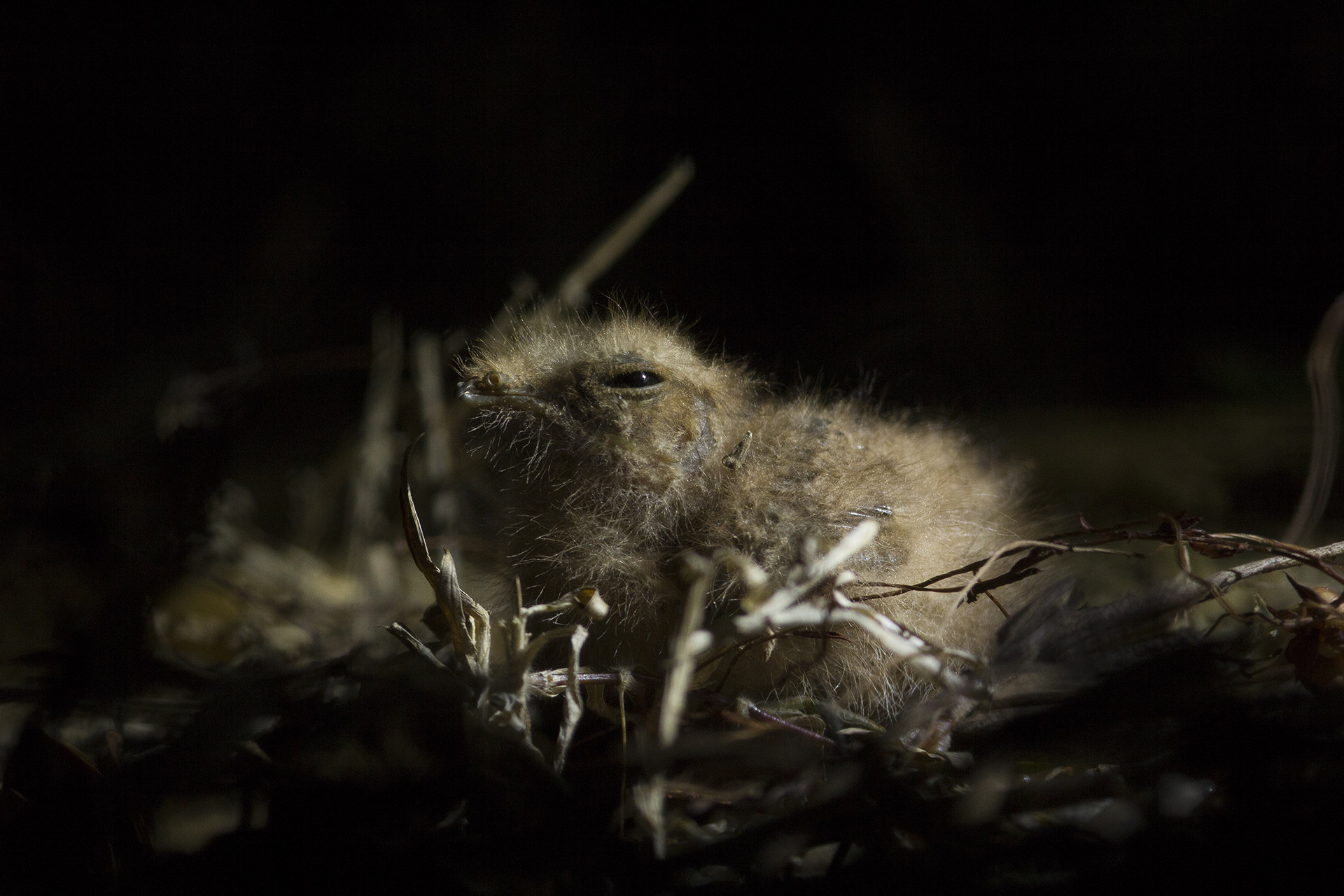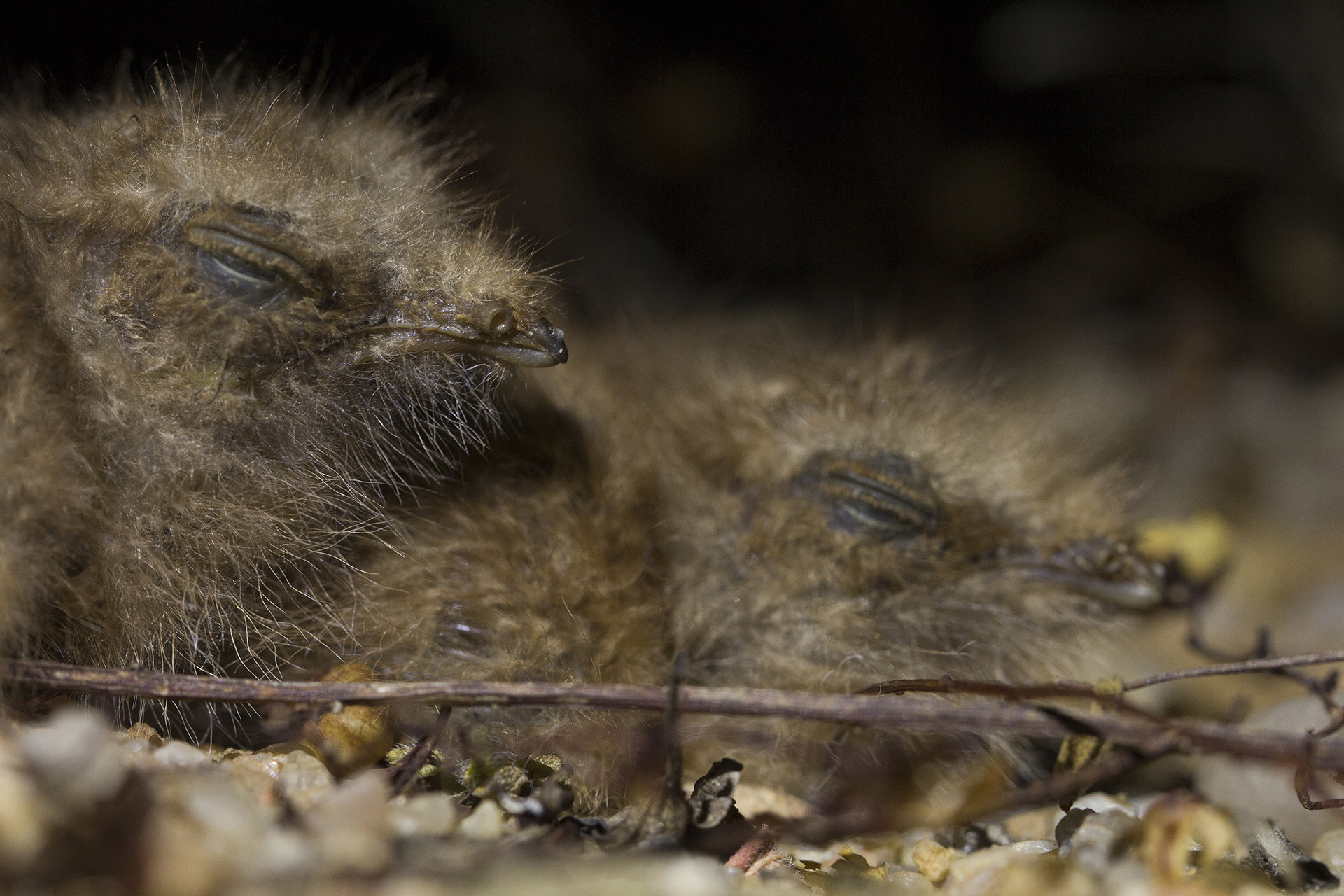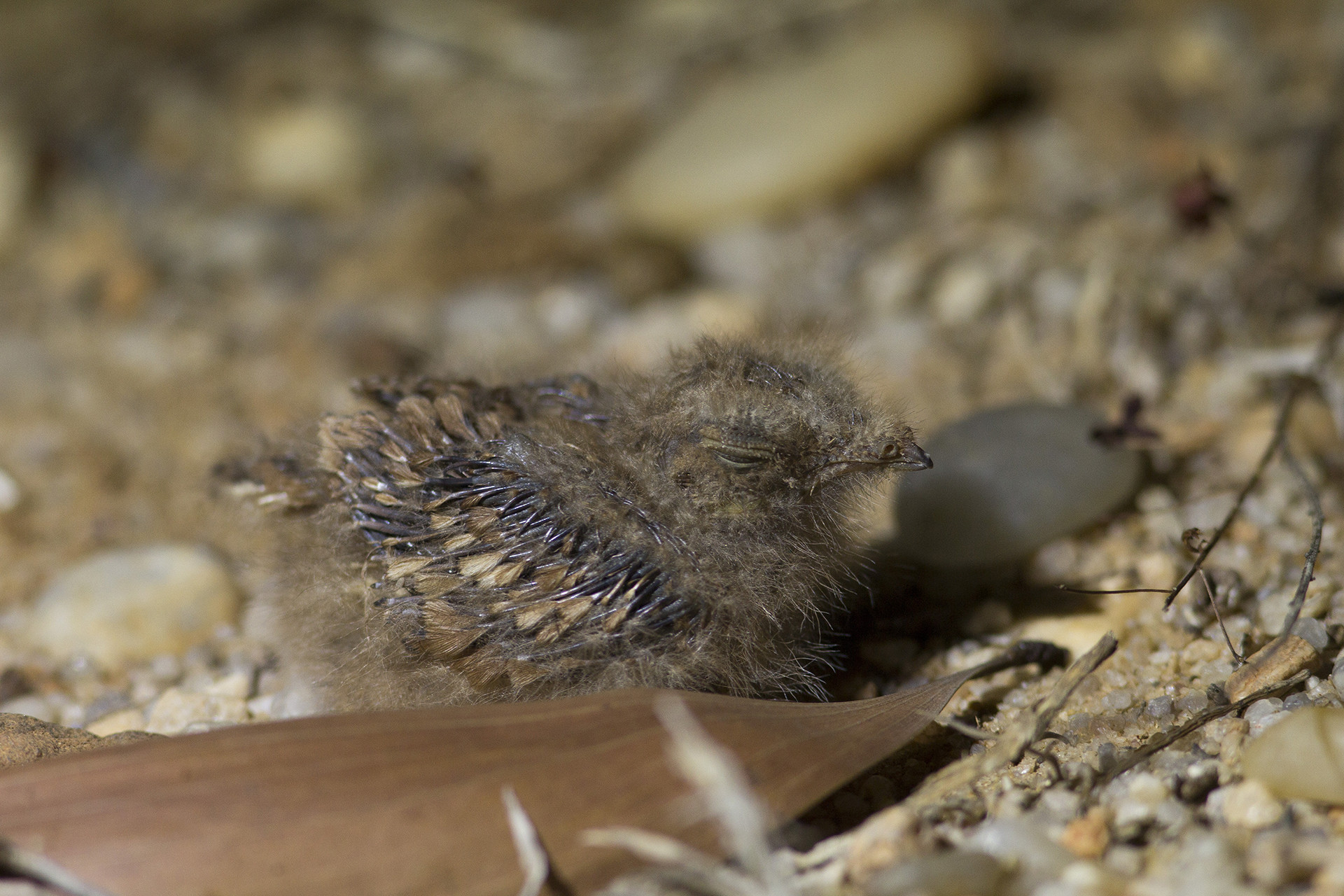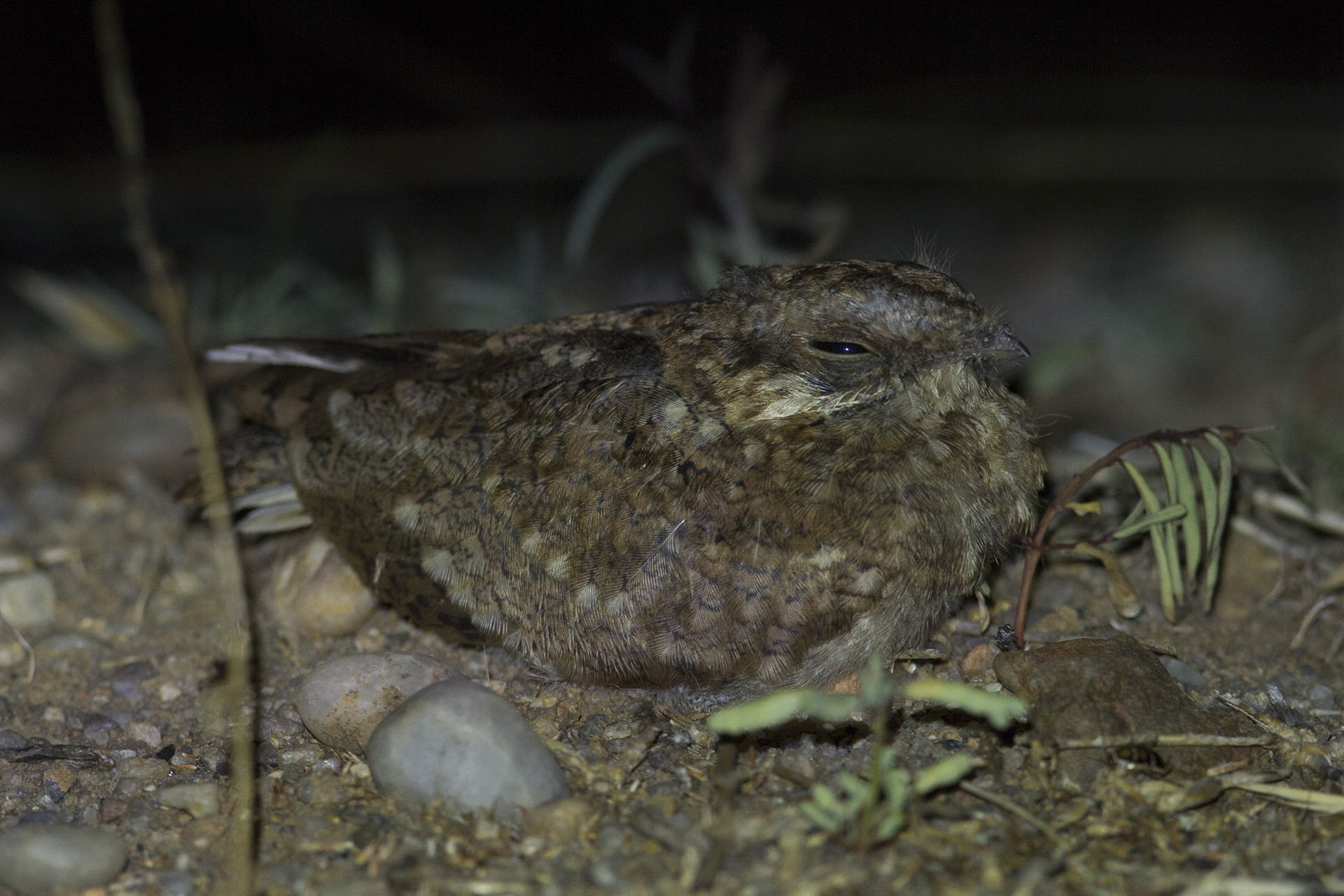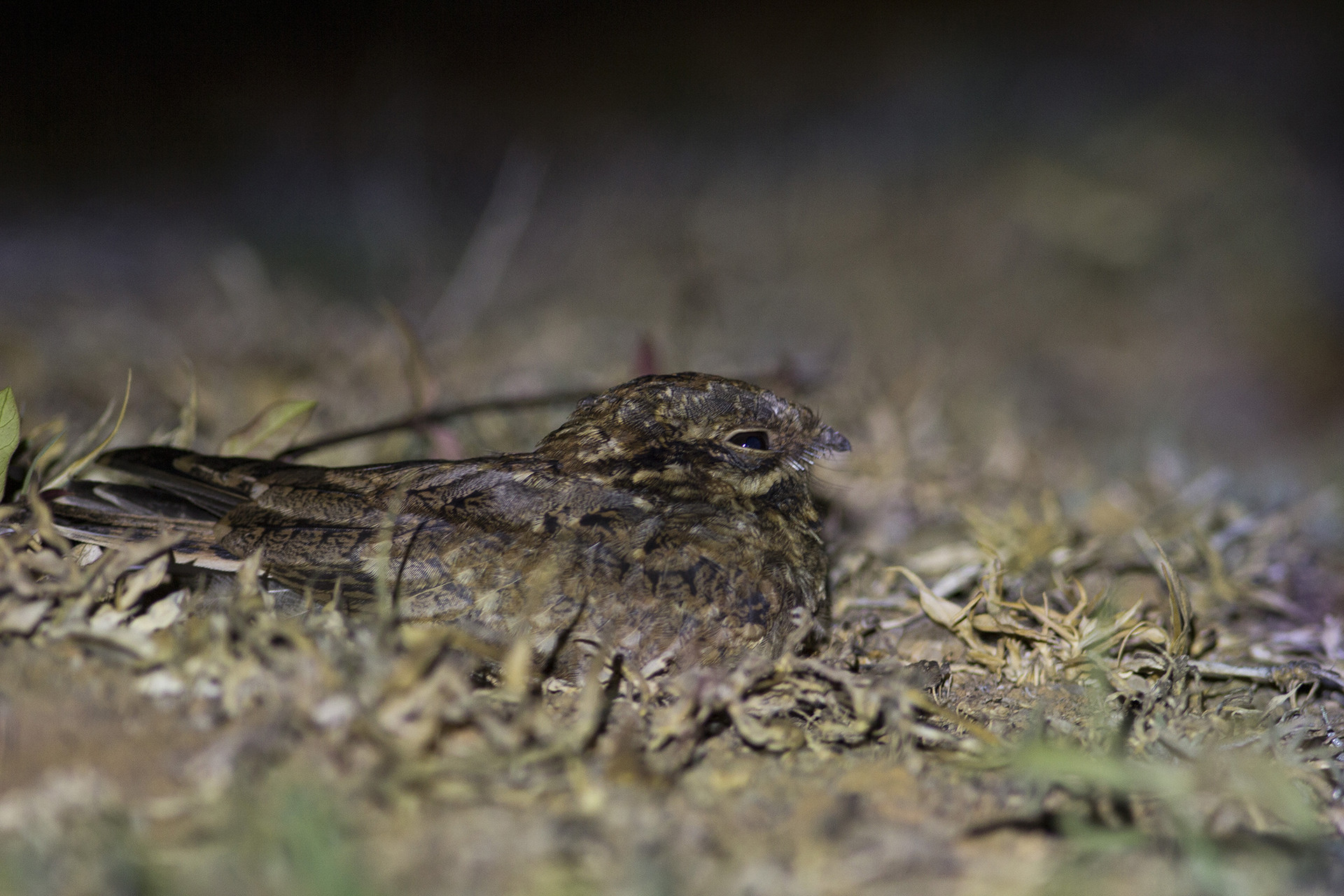Nightjars are medium-sized birds that take over flycatching duties from drongos and bee-eaters after dusk. Like owls, these crepuscular hunters have distinctly large wings and a very silent flight. Their cryptic plumage allows them to blend in effortlessly with dry foliage and tree bark during the day, and at night, you can find them perched near clearings in the canopy, snapping up insects. Unlike most birds, nightjars will sit tight even when you approach them, in the hope that their camouflage and the darkness of the night will keep them hidden.
It all started during a late-night herping session when my headlamp picked out a pair of eyes in the middle of the field. My familiarity with the area allowed me to quickly identify the owner of the eyeshine – an Indian Nightjar (Caprimulgus asiaticus). No matter how cryptic their colouration is, the tapetum lucidum, a reflective layer behind the retina which increases the amount of light for night vision, easily gives away their presence to us humans. The bird’s call rang out soon after, often compared to the sound a bouncing marble ball makes as it comes to a halt, confirming its ID. I crept up slowly, and even after I squared it and started to walk past it, the bird did not move an inch, a behaviour that could only be attributed to a parent incubating their eggs.
For the next couple of days, I observed from a distance, finally confirming using a pair of binoculars, the presence of eggs when the individual took off to feed. Then one fine night, I found two fluff-balls instead of pebble-like eggs. The nightjar chicks were covered in down as soft as the hair on an elderly’s head. The parents often cuddled right next to them, rather than sitting on top of them. Sometimes the chicks would waddle towards a parent while vocalising softly as a means of establishing directions. Yet every night, the chicks would make their way back into their nest (a slight depression in the ground).
In the first two weeks of growth, their progress wasn’t as prominent over consecutive days, hence I visited them only every three to four days for a documentation shot. Because I gave a substantial gap between my visits, I didn’t witness them hatch, nor the order of hatching, but I could clearly see one sibling was bigger, tougher, and bolder than the other, and its feathers growing faster than the other.
Unlike young shorebirds, nightjar chicks don’t grow special feathers on the crown of their head and back, to serve as camouflage while crouching in the sand/mud. The down starts to shed all over the body simultaneously. Like a puzzle coming together piece by piece, the adult plumage develops here and there, forming a mosaic pattern. Spotting the fledgelings got increasingly harder; their feathers had nearly grown in completely, but unlike their parents, they preferred to sit with their eyes shut most of the time, rendering the torch useless for spotting eyeshine.
I located the siblings, the same way their parents did, by listening to their contact call – a soft “chuk chuk” sound. Fledgelings in trees, amidst thick foliage, cry out and cause a ruckus when hungry. The parents are then forced to feed them as that is the only way to keep them quiet, which in turn assures their survival – an evolutionary hack for the chicks. The young nightjars never let out a peep louder than the soft contact calls, probably because of the exposed nature of their nesting site, another evolutionary hack.
Every passing day, one new skill learned, mastered, until one evening, the adolescents caught me off guard as they suddenly popped into the air. Their wings had developed enough to allow them short bursts of flight, but as though guarded by some invisible fortress, they never left the quadrant of the field they were born in.
They grew more rapidly every day – wings grew longer every time I saw them and their flight grew stronger – until finally, one night, I could only photograph one of them. The older sibling had taken off and was never seen since. There wasn’t a distinct family structure anymore, the chicks were practically adults, and I could no longer recognise the parents as there were several other adults in the neighbouring area, and they all mixed seamlessly. Over the period of a month, the nightjars had completed their night-school and graduated with flying colours to go on to lead their own lives and help rear the next generation, for the continuation of their species.
Witnessing the growth of a new generation of the Indian Nightjar, a beautiful species that I’ve shared my home with for so many years, was an eye-opening experience. Parental care is a key aspect of evolution itself, without it and a couple of other adaptations, the survival of the progeny that represents the genetic marvel that is evolution would not exist.
Sanjay is an experienced, trained naturalist and made sure to maintain distance from the nest and not disturb the breeding process in any manner.
